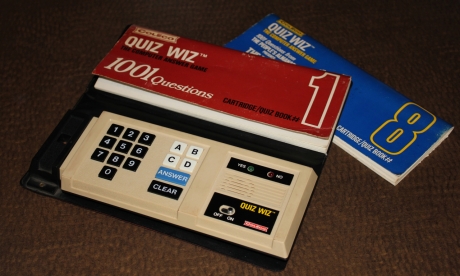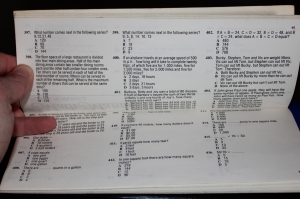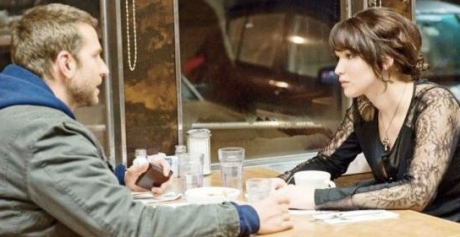Sound Decision
July 13, 2013
 A while ago I borrowed a friend’s Beats Audio headphones to listen to the vinyl transfer of Sign o’ The Times another friend of mine made for me. The CD of the album is horribly mastered for some reason, and I had a dream about finding a vinyl copy at a flea market. Trusting my dream, I drove down the road to the local flea market (fortunately it was Sunday morning so it was open) and within five minutes found the record for $10 (a bargain, but I negotiated it down to $6 for the fun of it).
A while ago I borrowed a friend’s Beats Audio headphones to listen to the vinyl transfer of Sign o’ The Times another friend of mine made for me. The CD of the album is horribly mastered for some reason, and I had a dream about finding a vinyl copy at a flea market. Trusting my dream, I drove down the road to the local flea market (fortunately it was Sunday morning so it was open) and within five minutes found the record for $10 (a bargain, but I negotiated it down to $6 for the fun of it).
Anyway, while listening to that and all the other music I’ve been into lately I became spoiled by the quality of the sound coming out of those Beats. The clarity of the sound was way beyond what I experience from my trusty white Apple earbuds. With the seed planted I knew I had to start my research into that state of over-the-ear headphones. I didn’t want to buy a pair of Beats because they are far too trendy for me and way more than I wanted to pay ($250 for the model I sampled). After spending a few hours reading reviews (both professional and Amazon user) I decided on the Sony MDR-V6, which list for $100. Amazon had them a bit cheaper but I wanted an even better bargain so I added them to my wish list and waited. A few weeks later they came down briefly to $60 and I ordered straight away.
I couldn’t be happier with them. They sound a bit different than the Beats. Not better or worse, just different. The Beats boost the bass (naturally, considering their hip-hop origins), and I prefer a more neutral sound for my broad musical tastes. The sound field is a bit more “airy” on the Sony phones, almost as if it was on a wider stage or something, and the Sony matches the sound clarity that allows each note to be heard distinctly. The Beats are a bit louder, but that’s not a problem since I don’t turn the sound up all the way on the V6s anyway.
So why are Sony headphones such a bargain? After all, they’re not exactly known for undercutting the competition. Well, it turns out that Sony has been making these headphones for decades. They are used widely in professional audio and video circles (where the neutral sound is appreciated) and haven’t changed much in all this time. I remember over-the-ear headphones being popular during my childhood, but they went out of favor with the advent of Sony’s Walkman (ironically) and then the iPod craze.
Diving from Dissatisfaction
July 9, 2013
 I’m reading a lot of books at the moment. I’m reading Flowers for Algernon and The Great Gastby (again) as part of my summer school ELA teaching experience. I’m also reading Flip Your Classroom in preparation for the next school year. Most importantly, I’m re-reading When You’re Falling, Dive which was given to me by a dear friend a few years ago and has been quite influential on me.
I’m reading a lot of books at the moment. I’m reading Flowers for Algernon and The Great Gastby (again) as part of my summer school ELA teaching experience. I’m also reading Flip Your Classroom in preparation for the next school year. Most importantly, I’m re-reading When You’re Falling, Dive which was given to me by a dear friend a few years ago and has been quite influential on me.
When You’re Falling is basically about acceptance of life as it really is, and about counteracting the conditioning that we’ve learned over the years. Here are a few quotes for the first section followed by my current thoughts on each:
“It’s not that we gain the power to change circumstances; we develop the skill to determine our experience of those circumstances.” (page 4)
This is one I really picked up on the first time I read it. Now, when I’m feeling blue (for a reason or just because I’m having an “off” day) I let myself experience it. I don’t try to fight it; I accept that being sad at times is part of life.
“I’ve stopped trying to make myself better, and I’m happier.” (page 43)
This one is particularly interesting. When you think about it, self-help books in general are feeding the conditioning that says “I am not good enough as I am” under the guise of helping you.
“…dissatisfaction is at the root of our addiction to distraction.” (page 52)
How much of life is about distraction? Entertainment or work or even love can be a way to distract ourselves from the reality of life. What are we afraid to face?
Review Roundup
May 5, 2013
 I’ve been to the movies recently to see two very different films…
I’ve been to the movies recently to see two very different films…
Oblivion is a sci-fi film that, like many recent films in the genre (In Time, The Hunger Games, ) lets an interesting premise down with some plot holes and an ending that is a bit silly. Tom Cruise stars as one of the few people still on Earth. He works to maintain defense droids that protect giant water sucking machines (to be sent to Titan, where humans have been relocated after a war with aliens). His memory has been wiped out for security reasons but he dreams of his past and of his love, which leads him to some interesting discoveries. Worth seeing if you like sci-fi and/or Morgan Freeman. ★★½ out of 4.
The Place Beyond the Pines is a gritty film starring Ryan Gosling and Bradley Cooper, though the two only appear in one scene together. The first part of the film is about Gosling’s character, a carnival performer who decided to try to take care of a child he just discovered he had. The second act follows Cooper’s rookie cop character as he struggles with corruption within the force. Finally, a 15-year jump in time brings the next generation together. It’s the kind of movie that makes you uncomfortable at times. It’s well made but not terribly enjoyable to watch. ★★★ out of 4.
To prepare for a couple of upcoming releases, I’ve also read a couple of books in the last few weeks. Continuing the string of classics I’ve tackled the last couple of years was The Great Gatsby by F. Scott Fitzgerald. I’ve been drawn to this book recently by a recent podcast about the author and his wife Zelda as well as their appearance in my current favorite “background” movie (something I put on if I’m working on something or having trouble sleeping), Midnight in Paris.
I’d never read the book before (an indictment of the Plainfield Public School System) and thought it was good, though I had to kind of make myself pick it up each night. I found Fitzgerald’s use of language to be interesting and will probably read it again after I see the film (starring Leonardo DiCaprio).
Literary purists will think me crazy, but World War Z by Max Brooks engrossed me in a way that Gatsby didn’t. I just couldn’t put it down and read the whole thing in just a few days. It’s a big-picture Zombie story told as a collection of stories spanning the entire war told by survivors from around the world. The film, starring Brad Pitt, is surely not going to be faithful to the book since it will focus on Pitt’s character who presumably will be everywhere the action is, which is implausible even for a zombie movie.
Running with the night
April 24, 2013
 I finally bought new running shoes! I’ve decided to try to run a few road races (5k) this summer and since I haven’t run since the Achille’s tear I thought it might be a good idea to retire my venerable Asics in an effort to protect my feet. I remembered writing about them before and found this post from my old blog. Amusingly I mention that “they’re so old I don’t remember when I bought them.” And that post was from 2005! So I guess I was more than overdue for a new pair.
I finally bought new running shoes! I’ve decided to try to run a few road races (5k) this summer and since I haven’t run since the Achille’s tear I thought it might be a good idea to retire my venerable Asics in an effort to protect my feet. I remembered writing about them before and found this post from my old blog. Amusingly I mention that “they’re so old I don’t remember when I bought them.” And that post was from 2005! So I guess I was more than overdue for a new pair.
I found these new Asics on 6pm.com, which I discovered through dealnews.com. Buying shoes online may seem risky but these days it’s not hard to find reviews that inform whether a certain shoe runs to size or not. And they do fit perfectly, so I have no complaints about my shoes. My body, however, is not reacting well to the resumption of running. I seem to have underestimated the amount of work it will take to get in even half-way respectable running shape. Today I planned to run two miles and after a half a mile I switched to walking for a bit. I was huffing and puffing and since the bike path was infested with gnats I also ate quite a few bugs by accident. I thought my wind wouldn’t be a problem since I’ve been able to play some light basketball and soccer without tiring too much, but I guess I was getting way more rest during those games.
I did complete the two miles through a mixture of running, walking, running backwards, and running sideways. These last two I mixed in because I figured I need to strengthen all the muscles in my legs and wanted to hit the calves a bit extra. At this point I just want to achieve balance and good form. I’ll worry about speed later if all goes well.
Early Electroedutainment
April 19, 2013
The Smarts! That’s the “incredible” prize you get for playing Quiz Wiz, according to the memorable television commercial. This toy was probably a Christmas present for us in 1979 or 1980, and I remember we played it quite a bit back then. Fast forward 33 years later and it still works fine.
Basically it’s a computerized (a big time buzzword in 1979) multiple choice trivia game. You type in the number of the question you want to answer, then the answer letter (A, B, C or D) and hit the answer button.
I rediscovered this toy recently while searching for a board game to play with my nieces at my parents’ house. I only found the original questions book (#1) and the “Book of Lists” (#8) book. The system is designed to use cartridges that presumably hold the “answer key” for each book, but the #8 book seems to work fine with the #1 cartridge. I’ll need to find more books in order to determine whether the “cartridge” actually stored anything or whether it was simply a marketing gimmick (cartridge systems were considered more advanced – think Atari VCS vs. Atari Pong).
Since I suspect the cartridge may not be storage, I tried to see if there was a pattern to the answers. I answered the first 100 questions and couldn’t find one. Memory was incredibly expensive in 1979 and storing 1001 answers on a 4-bit system requires 1.5K of ROM, which was an awful lot in those days. Far more likely is some sort of algorithm that determines the answer based on the number inputted. It would have to be fairly simple like multiplying the question number by some constant and then using the last two bits to determine the answer.
I did an experiment in Excel where I multiplied the question number by 8 and divided that product by 5 and then converted it to binary (base 2 number system – all 1s and 0s). Using only the last two digits of the product and converting to letters (00=A, 01=B, 10=C, 11=D) I get this for the first 50 answers:
BCABDABDACDACDBCDBCA BCABDABDACDACDBCDBCA BCABDABDAC
It’s a pattern that repeats after the first 20 answers. Altering the constants changes the length of the pattern, so I’m sure with enough experimenting I could create a pattern over 100 letters in length, as they probably did. As an additional experiment, I typed in a number greater than 1001 (3256) to see if there was an answer for that number. There was, and that answer did not correspond to the answer for either 325 or 256. Therefore I’m almost certain that the “answer key” is algorithm-based. The cartridge could serve as a “key” that could alter the pattern somewhat though. I’ll post an update if I find another book/cartridge.

The final step in my investigation was to take apart the Quiz Wiz to see what was inside. As you can see at left, there wasn’t much there. The other side of the board is where the keys connect and since it’s glued on I decided not to break the unit just to get a look. There is one small chip visible on our side that could be a simple processor (most likely purpose-designed to do the above calculation).
Coleco went bankrupt in 1989 but Quiz Wiz lived on, it seems. Tiger came out with its own Quiz Wiz in the mid-90s that used the same buttons and booklet format. And judging by this cringe-worthy commercial it was not lacking in street cred.
Does Not Compute
March 29, 2013
Welcome to a boring trip down computer memory lane. You might want to skip to the last two paragraphs if compuspeak puts your to sleep.
I’ve been nostalgic lately for the pre-PC era of computing. I discovered a site that has scanned issues of Family Computing Magazine from 1982 to 1989 and skimmed through almost all of those. After that I discovered Atariage.com and read even more about those older machines. I’ve also been reading retroGamer magazine and learned more about the machines that were popular in the UK during that time.
The 8-bit era of computers was remarkable in its variety. Each model differed in speed (back then CPUs had clock speeds in the single digit Mhz, roughly a thousand times slower than today’s computers) and RAM (64K was a lot back then) and storage was on floppy disks (if you ponied up the bucks, otherwise it was cassette). The processors also varied by model and were simple enough to understand their architecture. The MOS 6502 was very popular due to its low cost and found itself into the Apple ][, Atari 800, Commodore 64, and later in the NES game console. The Zilog Z80 was big in “business” machines that ran CP/M (and in the Spectrum in England), but the best 8-bit processor was in the machine the I owned, the Tandy Color Computer. While it was a bit weak in the graphics and sound chips compared to some of its competitors, the Motorola 6809 at its heart was an elegant and powerful design.
The 16-bit era followed with the Macintosh, the Amiga and the Atari ST. At this point IBM’s PC started gaining traction, but when the flood of PC clones started spawning left and right the competition between models quickly led to a price and feature war that droves PCs to the forefront of computing. When Microsoft finally released a version of Windows (3.1) that could compete with the graphical operating systems of the 68000-based systems it was game, set, and match.
I miss that era quite a bit. While people played games and wrote in world processing programs back then, a good percentage of people who used computers in those days actually learned to program. Software was hard to come by at times, so writing your own was often the best way to make a computer useful. But they were so limited in speed and memory that creativity was needed to make programs work properly. Magazines and the occasional book on programming (Radio Shack stocked a couple) were the only sources of information. The massive amount of info about these computers on Wikipedia today would have been a godsend back then.
Recently I’ve sensed a bit of that spirit in a hobbyist device that is inspiring people do do more with computes than stalk people on Facebook and watch YouTube videos. It’s called the Raspberry Pi and it consists of the little circuit board I’m holding above. It has HDMI video out (connected to my TV in the photo), 512MB of RAM, an ARM processor (like your phone), a couple of USB ports and an SD card slot (for storage). The best part is that its only $35. I’ve already tried a couple of operating systems and it runs well, if a bit pokey compared to my trusty Macbook Air.
I’m not sure what kind of project I’m going to use my Pi for yet, but I’m sure something will come to me. I bought a second one and gave it to an exceptionally bright student of mine. I’m looking forward to seeing what he does with his as well.
Stuff Your Tasty Brain Should Know
March 19, 2013
 My music kick has subsided a bit and I’m listening to podcasts again when I have longer drives. In the last couple of days I’ve listened to a good one about zombies by Josh & Chuck (Stuff You Should Know) and an equally gross one about the Great Stink.
My music kick has subsided a bit and I’m listening to podcasts again when I have longer drives. In the last couple of days I’ve listened to a good one about zombies by Josh & Chuck (Stuff You Should Know) and an equally gross one about the Great Stink.
Th zombie podcast dealt with real life zombies in Haiti first and then the enormously popular fictional zombie. The real zombies are a product of the cultural belief in zombies and some interesting “medicine” that creates a paralyzed state in the victim. Being “zombified” in Haiti is usually the result of angering your family (refusing to marry someone they picked for you or refusing to agree to sell jointly owned land were given as examples). A bokor (sorcerer) would then apply a powder to your skin. This powder contains toxins that irritate the skin an allow access to the bloodstream, where another toxin (from the pufferfish) induces paralysis. You are then buried alive and though you appear to be dead you are fully conscious of what is happening. After a few hours you are dug up and “resurrected.” Through the use of hallucinogens combined with the trauma of the experience you are kept in a trancelike state, sometimes for years. Fortunately, doing this is now against the law (yes, there’s actually a law that states that you cannot make someone a zombie).
The podcast then discussed George Romero’s popularization of zombies, which has led us to excellent television like The Walking Dead. Incidentally, if a zombie epidemic actually happened it’s unlikely we’d be able to stop it according to scientists.
The Stuff You Missed in History Podcast was almost as gross as zombies. The Great Stink of 1858 in London was caused by the river Thames being overloaded with human waste due to the widespread adoption of the flushable toilet. Before the use of toilets people emptied their chamberpots into cesspits, but that only worked with (relatively) dry waste. The rapid population grown of London from 1800-1860 (the population went from less than a million to more than three in that time) also made this system untenable. The summer of 1858 was particularly hot and for a couple of weeks anyone near the river dealt with an unbearable smell. This, of course, led to the creation of a proper sewer system that is mostly still in use today.
My annual F1 Post
March 13, 2013
 F1 returns this weekend! As usual the season starts down under which means that the first race will be shown live on NBC Sports Network here in the US at 2:00 a.m. early Sunday morning. It promises to be another exciting, closely fought season since the rules haven’t changed much since last year. This tends to let the slower cars catch up a bit since they can make bigger gains than the already better optimized cars. Fortunately, the ugly duckling look to the cars has been banished by a rule allowing a vanity panel to smooth out the nose. Next year there are big rule changes including a new engine (1.6L Turbo V6 with ERS). The biggest change this year is on the driver front – Lewis Hamilton has moved from McLaren to MercedesGP, replacing the retiring Michael Schumacher. Mexican Sergio Perez has slotted into the plum McLaren seat vacated by Hamilton and alongside my favorite driver, Jenson Button (shown above).
F1 returns this weekend! As usual the season starts down under which means that the first race will be shown live on NBC Sports Network here in the US at 2:00 a.m. early Sunday morning. It promises to be another exciting, closely fought season since the rules haven’t changed much since last year. This tends to let the slower cars catch up a bit since they can make bigger gains than the already better optimized cars. Fortunately, the ugly duckling look to the cars has been banished by a rule allowing a vanity panel to smooth out the nose. Next year there are big rule changes including a new engine (1.6L Turbo V6 with ERS). The biggest change this year is on the driver front – Lewis Hamilton has moved from McLaren to MercedesGP, replacing the retiring Michael Schumacher. Mexican Sergio Perez has slotted into the plum McLaren seat vacated by Hamilton and alongside my favorite driver, Jenson Button (shown above).
I’ve been thinking recently about why I love F1 so much when my interest in other professional sports has waned to the point where I hardly watch football or basketball on TV at all. The spectacle is certainly there – the start of an F1 race is a 22-car drag race to the first corner, where they usually (and miraculously) find a way to funnel into formation without crashing. Exciting stuff. But it’s way more than that. F1 isn’t really a driving competition, it’s an engineering competition. All 11 teams (two cars each) design and build a new car every year, and update that car throughout the season (new front and rear wings, bodywork, and more). It’s a relentless battle of minds that is manifested in an auto race every two weeks. Between those races teams are working flat out using CFD (computational fluid dynamics) systems, wind tunnels, simulators (similar to this one), and hundreds of people and hundreds of millions of dollars. It’s a pure meritocracy that would make even Ayn Rand smile.
I will, of course, be watching the race live in the middle of the night. Any F1 fans (or “normal” insomniacs) who are reading this are free to join me.
Take back tomorrow (updated)
March 4, 2013
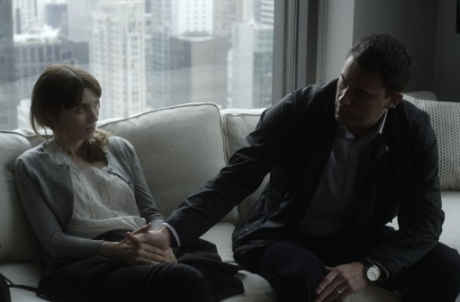 I’ve recently seen two movies with a focus on psychology. The first was the new Steven Soderbergh release, Side Effects. Rooney Mara is amazing as a young woman who takes an experimental antidepressant (the fictional Ablixa, which has its own website). The first half of the story exposes psychiatry for the pseudoscience that it really is at this point, as well as the influence of pharmaceutical companies over doctors and a bit of the ridiculousness of our pill-popping culture. They movie takes a twist in a more conventional direction from there but is still enjoyable. I also admired the cinematography; there are some interesting focus effects that enhance the mood. ★★★½ out of 4.
I’ve recently seen two movies with a focus on psychology. The first was the new Steven Soderbergh release, Side Effects. Rooney Mara is amazing as a young woman who takes an experimental antidepressant (the fictional Ablixa, which has its own website). The first half of the story exposes psychiatry for the pseudoscience that it really is at this point, as well as the influence of pharmaceutical companies over doctors and a bit of the ridiculousness of our pill-popping culture. They movie takes a twist in a more conventional direction from there but is still enjoyable. I also admired the cinematography; there are some interesting focus effects that enhance the mood. ★★★½ out of 4.
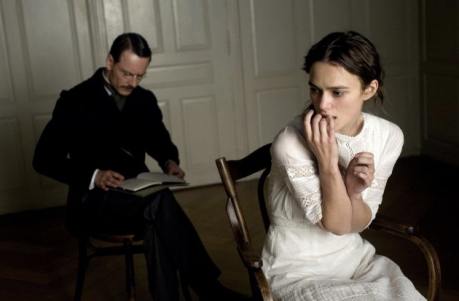 A Dangerous Method I saw at home on my own theater. This David Cronenberg picture is a semi-historical take on the early days of psychoanalysis. The film focuses on the relationship between Carl Jung, his patient (and later colleague) Sabina Spielrein, and Sigmund Freud (well played by Viggo Mortensen in an atypical role). The screenwriter didn’t have to embellish too much since Jung actually did have an affair with Spielrein in real life (though I have no idea if the kinky sex was part of the real life relationship). They highlights to me were the discussions between Jung and Freud about the nature of emotional issues. The influence of Otto Gross on Jung was also quite interesting, as it made clear that the psychologist has to figure himself out as he evolves while trying to do the same for the patient. ★★★ out of 4.
A Dangerous Method I saw at home on my own theater. This David Cronenberg picture is a semi-historical take on the early days of psychoanalysis. The film focuses on the relationship between Carl Jung, his patient (and later colleague) Sabina Spielrein, and Sigmund Freud (well played by Viggo Mortensen in an atypical role). The screenwriter didn’t have to embellish too much since Jung actually did have an affair with Spielrein in real life (though I have no idea if the kinky sex was part of the real life relationship). They highlights to me were the discussions between Jung and Freud about the nature of emotional issues. The influence of Otto Gross on Jung was also quite interesting, as it made clear that the psychologist has to figure himself out as he evolves while trying to do the same for the patient. ★★★ out of 4.
Update: Last night (3/9) I saw Silver Linings Playbook and absolutely loved it. This movie has it all: bipolar disorder, romantic obsession, OCD, dysfunction families, Halloween, football and dancing. The acting is terrific across the board, but Jennifer Lawrence’s performance as Tiffany is especially compelling. Her character has a habit of calling people out with remarkable insight, defying social convention by speaking hard truths. Bradley Cooper’s Pat is less constructive with his social issues, and is solely motivated by trying to win back his wife (which under the circumstances isn’t realistic). The chemistry between the two is palpable and makes the movie sing. My only criticism is that Pat’s mental issues seem to magically resolve themselves late in the movie, but that doesn’t stop this from being a totally charming, intelligent movie. I can’t wait to see it again. ★★★★ out of 4.
Millenium Rock
February 25, 2013
 I’ve been on a fiction craze lately and have finished another series of books. I was totally captivated by the Millennium series (The Girl with the Dragon Tattoo is the first and most famous of this trilogy). Apart from learning about Sweden (where they take place) and about the interesting story of the author (who died not long after submitting the completed trilogy to his publisher), there were other interesting tidbits I latched onto.
I’ve been on a fiction craze lately and have finished another series of books. I was totally captivated by the Millennium series (The Girl with the Dragon Tattoo is the first and most famous of this trilogy). Apart from learning about Sweden (where they take place) and about the interesting story of the author (who died not long after submitting the completed trilogy to his publisher), there were other interesting tidbits I latched onto.
One of those is the territory of Gibraltar. It’s famous for its location (at the straight that connects the Atlantic Ocean to the Mediterranean Sea) and for eponymous rock mountain. The limestone rock is roughly 1,400 feet tall and dominates the landscape, as you can tell from this photo. While this photo is taken from Spain, Gibraltar itself is a British Overseas Territory and the 30,000 inhabitants squeezed onto 2.6 square miles are mostly British citizens. Naturally Spain isn’t too pleased with this arrangement, but they are being a bit hypocritical since they have a similar setup in Morocco on the other side of the straight, a mere 10 miles away.
